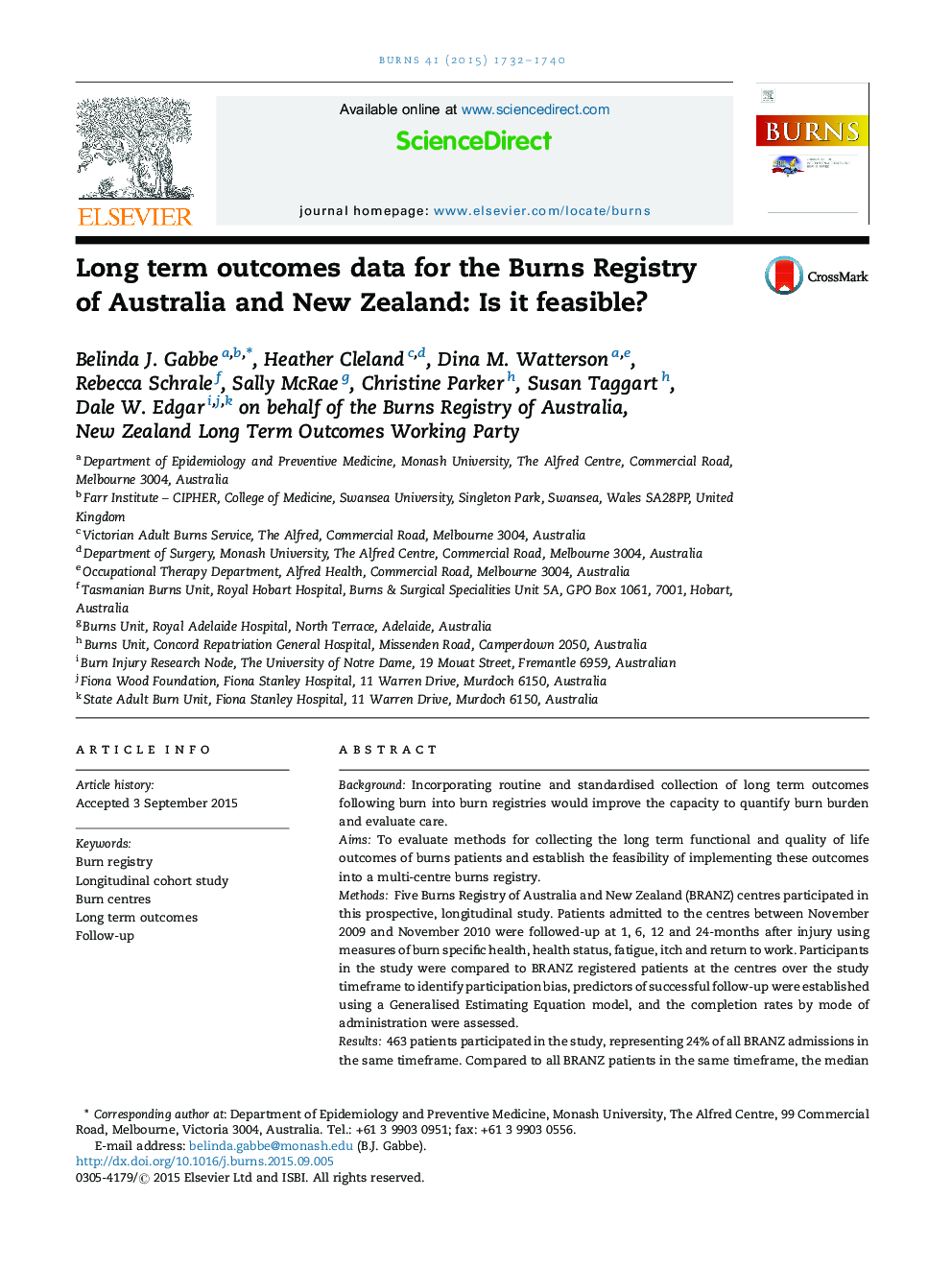| Article ID | Journal | Published Year | Pages | File Type |
|---|---|---|---|---|
| 6048604 | Burns | 2015 | 9 Pages |
â¢One in four eligible patients participated in the study.â¢The attrition rate was high and no superior mode of administration was identified.â¢Older age and greater %TBSA were strong predictors of successful follow-up.â¢Alternative follow-up models and tailored follow-up by burn severity or type are needed.
BackgroundIncorporating routine and standardised collection of long term outcomes following burn into burn registries would improve the capacity to quantify burn burden and evaluate care.AimsTo evaluate methods for collecting the long term functional and quality of life outcomes of burns patients and establish the feasibility of implementing these outcomes into a multi-centre burns registry.MethodsFive Burns Registry of Australia and New Zealand (BRANZ) centres participated in this prospective, longitudinal study. Patients admitted to the centres between November 2009 and November 2010 were followed-up at 1, 6, 12 and 24-months after injury using measures of burn specific health, health status, fatigue, itch and return to work. Participants in the study were compared to BRANZ registered patients at the centres over the study timeframe to identify participation bias, predictors of successful follow-up were established using a Generalised Estimating Equation model, and the completion rates by mode of administration were assessed.Results463 patients participated in the study, representing 24% of all BRANZ admissions in the same timeframe. Compared to all BRANZ patients in the same timeframe, the median %TBSA and hospital length of stay was greater in the study participants. The follow-up rates were 63% at 1-month, 47% at 6-months; 40% at 12-months, and 21% at 24-months after injury, and there was marked variation in follow-up rates between the centres. Increasing age, greater %TBSA and opt-in centres were associated with greater follow-up. Centres which predominantly used one mode of administration experienced better follow-up rates.ConclusionsThe low participation rates, high loss to follow-up and responder bias observed indicate that greater consideration needs to be given to alternative models for follow-up, including tailoring the follow-up protocol to burn severity or type.
